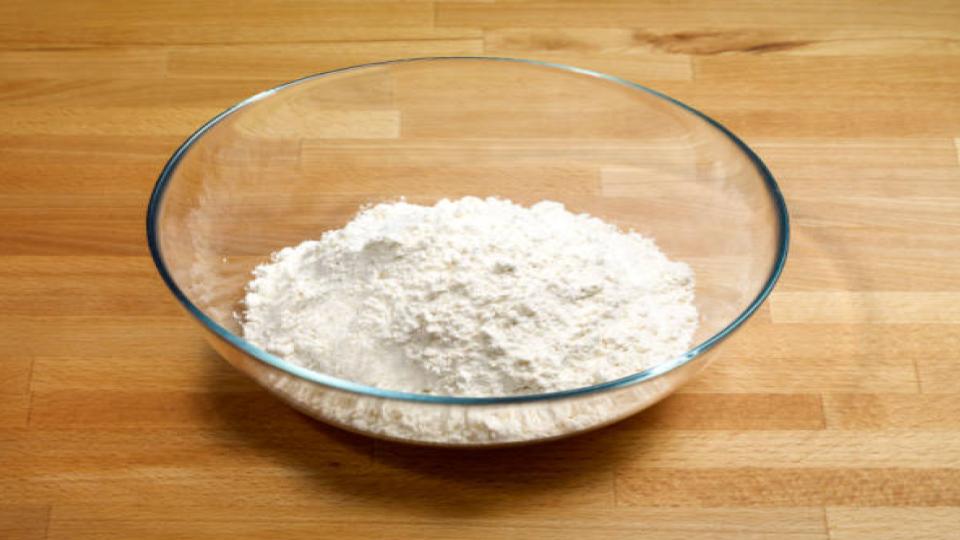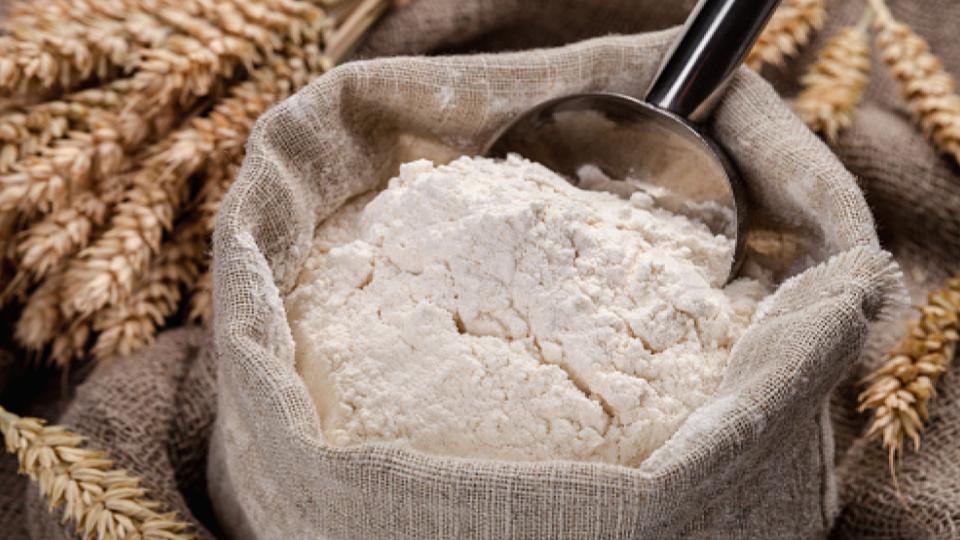This site contains affiliate links. As an Amazon Associate, I earn a commission from qualifying purchases at no extra cost to you. Full Disclosure Here.
Flour is one essential food item you don’t want to run out of in case of a disaster or a long-term emergency. If you have flour in your pantry, you can rest easy knowing you’ll have good sustenance should a crisis happen. Thus, it’s a big advantage if you know how to store flour long term.
Let’s cover that subject so you can add flour to your prepper stockpile.
But first, let’s answer some basic questions.
Does Flour Go Bad?
Just like any other food item in the pantry, flour can get spoiled when exposed to certain elements. Despite being non-perishable, flour can go rancid if not stored correctly.
Some of the most common elements that affect the quality of your flour include moisture, light, oxygen, and insects.
Here are some of the reasons why flour goes bad?
Oxidation

Oxidation occurs when certain nutrients in flour interact with oxygen, resulting in them breaking down. This chemical reaction makes the oils present in the flour go rancid, resulting in a change in flavor and turning the flour stale. Thanks to this process, old flour loses some nutritional value and tastes terrible.
To prevent oxidation, you need to keep your flour in a sealed container to limit the effects of oxygen.
Mold
Temperature and humidity fluctuations can affect the quality of many food items in the pantry, including flour. Increased humidity can make the flour start absorbing moisture and become moldy.

The flour would smell moldy even before you notice the presence of molds in it. This is a sure sign that it isn’t good for human consumption.
Insects
Generally, grains are natural habitats for insects. In flour, the most common ones are weevil or flour fly. So, even if you store the flour in an airtight container, you may still find some weevils and small insects in there. That is because insect eggs normally infest the flour by the time you’re purchasing it.

The eggs in the flour can hatch within a few months resulting in an infestation. Once they hatch, then you have a serious issue that can be very hard to eradicate.
Therefore, it’s crucial that you kill the insect eggs before storing the flour. After all, most storage methods can still allow the eggs to hatch.
Absorbing Smells
Just like most foodstuffs, flour is like a sponge that can absorb the smell of the other items in the pantry. So if you place some onions or other spices near the four, then you should be ready for your bread to have a funky smell. Remember to keep the flour away from the cleaning products in the house.
What Is the Lifespan of Flour?
Flour cannot last for more than six months in its original packaging. But if you place it in an airtight container, it can last for a maximum of 10 months.
If you get rid of the oxygen present in the container using an oxygen absorber, it can last for up to five years.
The lifespan of flour is determined by numerous factors, with the main one being the storage method you pick.
How to Store Flour Long-Term?
Flour is a staple ingredient in many kitchens, and it’s important to keep it fresh. If you want to buy a large bag of flour and use it over several months or even years, there are several things you can do to make sure your flour remains usable. Here are some tips on how to preserve flour for the long term.
Some of the most effective methods include:
Airtight Containers
The whole idea behind long-term storage is to prevent the elements mentioned above from damaging your flour. So for the flour to last for more than six months, you must first remove it from its original packaging and pour it into an airtight container.
Note that the flour may come with some insect eggs that can hatch under the right conditions. The eggs may take months or weeks to hatch. So before storing flour, you must get rid of them in order to avoid a nasty infestation.
To get rid of the eggs, you can either microwave or freeze the four before storing them in an airtight container. This will help you store your baking flour for about 10 months. After all, it won’t eliminate the oxygen in the container.
Some of the best containers for this job include:
- Vacuum sealer containers
- Mason jars
- Airtight containers
Freezer
As mentioned, freezing is one method that can also kill insect eggs. So, if you have space in your freezer, then you can store the flour in the freezer. The flour can remain fresh in the freezer forever, but you have to be prepared in case of a blackout. During a blackout, you can either use a generator or solar power.
But before using flour, you will have to get it to room temperature after removing it from the freezer. Because of condensation, the baking flour may absorb some moisture as its temperature increases. That’s why it’s important that you store the flour in a sealed container and make sure condensation occurs on the container instead of the flour.
If the flour gets wet, you should be ready to spread it on the baking sheet and heat it at a temperature of 200 degrees Fahrenheit. If it’s too damp, you may have to heat it for about an hour and remove the clumps after it has dried before baking.
Vacuum Sealing
Air is an enemy of flour shelf life, so you have to eliminate the oxygen using vacuum sealing. However, these bags are not 100% leak-proof; therefore, humidity and air can still seep through. The stored flour will still remain fresh for about 24 months.
Vacuum sealing may not kill the eggs, but it can keep other insects away. This is why you need to kill the insect eggs before storing the flour.
When vacuum sealing flour, you should do the following:
- Pour the flour in huge vacuum sealer bags. Make sure you don’t pour the flour directly into the vacuum sealing bags if you don’t want the particles to stick to your machine.
- Seal the bag using your machine.
- Store the sealed bags in the freezer for about 96 hours to help kill the insect eggs.
- After removing the sealed bags from the freezer, you can place them on the table. Let its temperature increase to room temperature before storing it in another container. This step will help prevent the condensation stage.
Jars, Plastic Containers, or Buckets With Oxygen Absorbers
Oxygen absorbers are the best solution for preventing oxygenation. So, after pouring the flour into the storage containers, you can add the oxygen absorbers. The oxygen absorbers will help absorb the trapped oxygen and prevent spoilage. Remember, no oxygen means the trapped insect eggs will never hatch.
Unfortunately, most storage containers are not 100% airtight. Therefore, they will eventually leak. So, the best option for storing flour is a bucket with a gasket lid.
Canning jars can also be reliable; plus, you’ll know if the oxygen absorbed worked since the lid will be sucked in. But make sure you store the container in a dark and cool place.
Mylar Bags With Oxygen Absorbers
Mylar bags can store flour for over 10 years, especially when used together with an oxygen absorber. These bags are produced using metal-like materials that are impervious to air or moisture.
So, by sealing the Mylar bags with an oxygen absorber, your food will be protected from oxygen, moisture, and light.
Plus, the insect eggs won’t hatch in the Mylar bags where there is no oxygen. When stored in Mylar bags, whole-wheat flour can remain fresh for over a decade.
Store in Original Packaging
Flour is typically sold in bags or boxes designed to keep it fresh. If you’re buying flour in bulk and storing it for a long time, make sure you store it in its original packaging. This will help maintain the quality of your flour over time.
The packaging should be in good condition and airtight. If you don’t have access to the original packaging, consider storing your flour in an airtight container with a lid. This will help prevent moisture from ruining your flour.
You may wonder how long flour lasts in an airtight container. If you store it in an airtight container, you can keep all types of flour for up to one year. But, if you don’t store your flour properly and allow moisture into the package, it may only last two to three months.
Place in a Cool, Dry Spot
The best place to store flour is in a cool, dry place. This can be in your pantry or on the countertop.
Keep flour away from heat sources such as ovens, stoves, and microwaves. Avoid storing flour in direct sunlight or near humidity sources such as a sink or wet basement.
Flour is susceptible to damage from light and moisture, so it’s important to store your flour in a way that keeps out both of these things. Sunlight can cause the oils in your flour to become rancid, making it smell and taste bad. Humidity can also lead to mold growth, which is not good for food storage.
Buy Canned Flour
Canned flour is a ready-to-use product sealed airtight to keep moisture and other contaminants out. This makes it ideal for long-term storage.
Canned flours are also shelf stable, meaning they can sit on your pantry shelf for years without going bad. Provided the environment is cool and dry, it could last up to 25 years.
Freeze Dried Flour
You can freeze dry flour if you want to store it for an extended period. Freeze-dried flour will last for years and years without any loss in quality. Freezing will also kill bugs or pests living in the grain and prevent them from damaging your food later.
While keeping your flour in its original bag, transfer it to an airtight container for long-term storage to protect it from freezer fluid and strong odors, as the flour can still absorb these.
It is important to note that flour frozen for a long time will lose its ability to rise when used, so if you’re planning on using flour for baking bread and other yeast-raised treats, consider buying fresh flour from the store, rather than using previously-frozen flour.
So there you have it. The best way to store flour for a long time is in a cool, dry spot away from direct sunlight. If you don’t have the space in your kitchen, consider buying canned flour instead. Canned flour can last for 25 years.
How Will I Know If the Flour Is Spoiled?
When it comes to baking flour, you should always trust your instincts. If the flour has a funny smell, then you should discard it. It won’t leave you with stomach poisoning, but the baked product won’t be delicious. So, you should inspect the flour for evidence of pests and bugs before using it.
Aside from flour, you should also stock these survival foods with long shelf life.
FAQs
What is the best container to store flour in?
The best container to use to store flour in the long term is an airtight container.
How long does flour last in an airtight container?
Depending on your store method, flour can last for several months or even years in an airtight container.
How long can you store canned flour?
Can flour has a shell life of about 25 years if stored correctly.
Can you freeze dried flour?
Yes, dried flour can be frozen as long as it is done in an airtight container.
Takeaway
Just because it’s considered non-perishable, it doesn’t mean that your baking flour won’t go bad. After all, exposure to oxygen, insects, light, and moisture can affect the quality of your flour. Fortunately, consuming spoiled flour won’t make you sick, but it will leave you with a stale baked product. So you should consider these factors when storing the flour. The good thing is that you can choose from several methods to increase the shelf life of your flour from 6 months to over 5 years. But before storing the flour, make sure you kill the bug eggs by either freezing or microwaving them.


